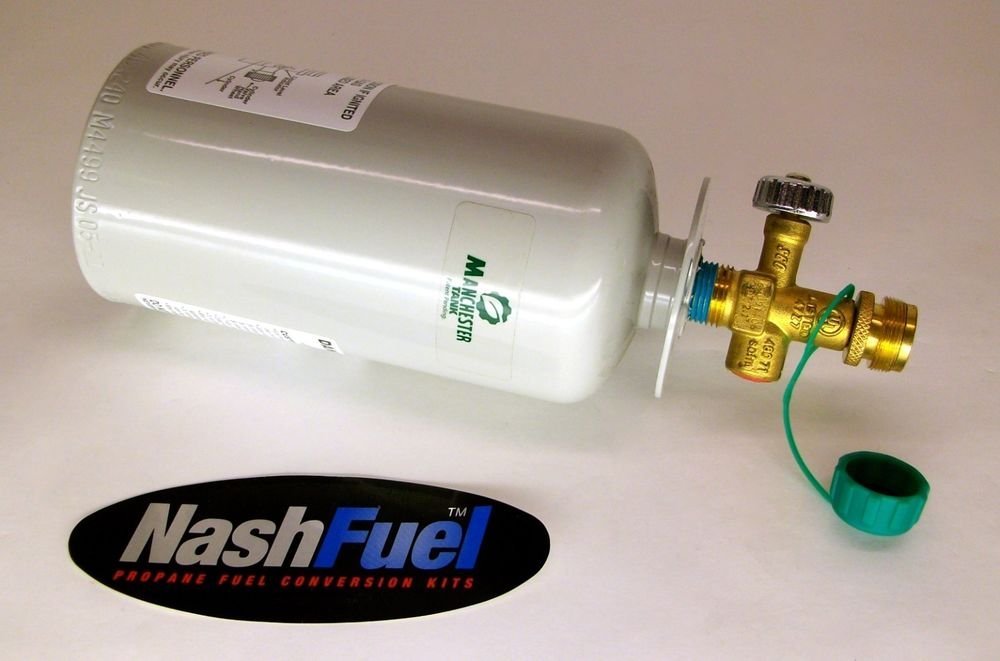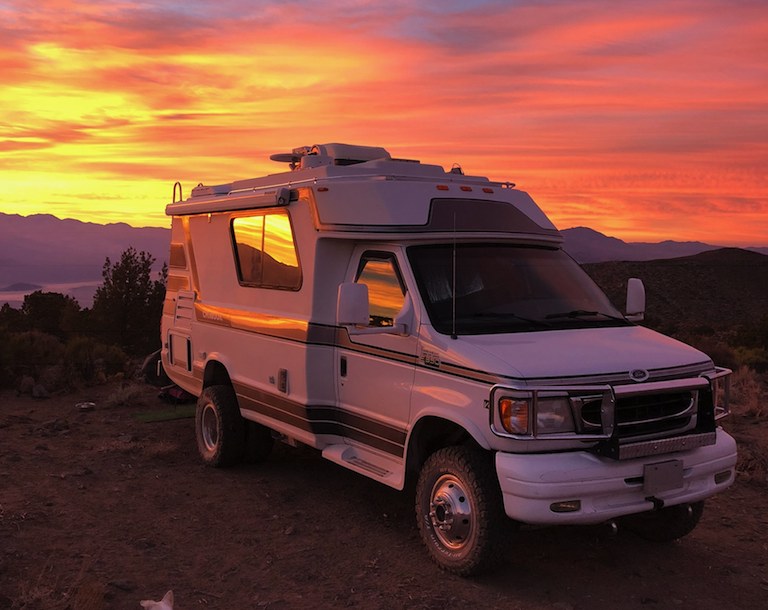The regular 1 lb Coleman tank is not designed to be refillable. The valve is cheaply made, and not engineered for dozens of cycles. The canister can be punctured easily. Many people who tried to refill the Coleman tank end up wasting almost a pound of propane when the valve can no longer holds the pressure and starts to leak.
There are refillable 1 lb tank, and they have the OPD valve, and properly engineered tank for refilling and have water tested and stamped. For me, a 5 lb tank is more reasonably sized, and last more than 8 hours for my stove with a full charge.
New to Forum
Re: New to Forum
2000 Concourse dinette, on 1999 6.8L Ford E350 Triton V-10 Chassis
Re: New to Forum
Chin, how much propane did you burn on your last trip?
More easily punctured? I'll have to ask you to explain further. We all have Youtube. But I trust you more.
Regarding the additional subjects you brought up: the labor to refill: it's nothing, and I get a lot more than an hour.
Convenient and compact, and a couple of them last quite a while. I just returned from a month on the road. I made a lot of stirfry, and I used about 1.5 lbs. Boy I'm sure glad I didn't lug along a bigger tank.
More easily punctured? I'll have to ask you to explain further. We all have Youtube. But I trust you more.
Regarding the additional subjects you brought up: the labor to refill: it's nothing, and I get a lot more than an hour.
Convenient and compact, and a couple of them last quite a while. I just returned from a month on the road. I made a lot of stirfry, and I used about 1.5 lbs. Boy I'm sure glad I didn't lug along a bigger tank.
1994 Premier
Re: New to Forum
The one-pound ones last about 1 or 2 hours. We do a lot of cooking last trip (church group, 30 people, 3 days 2 night), so we burn thru maybe 4 of the colemans, and we also have some people using butane stove, so it could have been more.
The main worry is that the valve is not designed to be refillable. The tank can be punctured with a screwdriver or a knife, and that is what we do when we need to recycle them to make sure there is no propane left inside.
The 5# tank is much thicker. It is not for everyone, since it is more expensive than the 20# tank, but that is what we use nowadays when we want better portability and less waste.
The main worry is that the valve is not designed to be refillable. The tank can be punctured with a screwdriver or a knife, and that is what we do when we need to recycle them to make sure there is no propane left inside.
The 5# tank is much thicker. It is not for everyone, since it is more expensive than the 20# tank, but that is what we use nowadays when we want better portability and less waste.
2000 Concourse dinette, on 1999 6.8L Ford E350 Triton V-10 Chassis
Re: New to Forum
Here is what a refillable 1 lb cylinder looks like:

you can see the difference compare to the construction of a disposal cylinder. I would definitely store the cylinder outside the rig, since you never know when they going to blow open.
(I had a 10 lb CO2 tank went pop when I was driving in a car, and it was not a pleasant experience. Being young and naive, I put it on the passenger side instead of in the trunk).

you can see the difference compare to the construction of a disposal cylinder. I would definitely store the cylinder outside the rig, since you never know when they going to blow open.
(I had a 10 lb CO2 tank went pop when I was driving in a car, and it was not a pleasant experience. Being young and naive, I put it on the passenger side instead of in the trunk).
2000 Concourse dinette, on 1999 6.8L Ford E350 Triton V-10 Chassis
Re: New to Forum
That one pounder is cute, but I don't understand its merits. It obviously has a thicker gauge steel than a Coleman (what doesn't), but unless you're stabbing it with a screwdriver or knife (as you do with your Colemans), I still don't get the value. If my green guys get chafed or rusty, I toss 'em, so durability has never been an issue.
It's usually pretty easy to get the valve to re-seat if there's a slight leak. But in those rare cases that it won't re-seat, I fret not, since one pound of lost propane is less of a concern than driving to the filling station four times as much for your 5# cylinder versus a 20#. But I don't live near a gas station, so that's a factor.chin_k wrote: September 16th, 2019, 7:54 amMany people who tried to refill the Coleman tank end up wasting almost a pound of propane when the valve can no longer holds the pressure and starts to leak.
What failed?chin_k wrote: September 16th, 2019, 7:54 am(I had a 10 lb CO2 tank went pop when I was driving in a car, and it was not a pleasant experience.
30 people for 3 days is not a germane comparison to a couple folks in a Chinook. I was curious about your personal use. I've never used more than a couple pounds over the course of a trip, some of which have been quite lengthy. So filling Colemans via a BBQ cylinder is best for us. But my wok doesn't burn as long as a BBQ, so that has to be considered.chin_k wrote: September 16th, 2019, 7:54 amWe do a lot of cooking last trip (church group, 30 people, 3 days 2 night),
Is this what you've done? How is it arranged?chin_k wrote: September 16th, 2019, 7:54 amWon't it be easier to tap off the line if you want a gas grill?
1994 Premier
Re: New to Forum
Every use case is different, and I am not going to steer you one way or other. I do not use much propane personally either. Just want to point out that the Coleman is not designed to be refilled repeatedly reliably.
I do not use much propane while on the road, and I have not modify the propane line. I do know that some Chinook has a built-in grill on the back (looks like a factory option), and the propane line was tapped to work with that. Someone also have a adapter put on it so they can use a portable outdoor stove with the propane tank. I think most certified propane shop can do that for you if you bring your rig to them, but I do not know the specific.
(About the CO2 tank, I think the scale they use is not accurate, and they overfilled it. Can't prove it, since the evidence was gone, but they were nice enough to replace the sacrificial valve, and refilled it.)
I do not use much propane while on the road, and I have not modify the propane line. I do know that some Chinook has a built-in grill on the back (looks like a factory option), and the propane line was tapped to work with that. Someone also have a adapter put on it so they can use a portable outdoor stove with the propane tank. I think most certified propane shop can do that for you if you bring your rig to them, but I do not know the specific.
(About the CO2 tank, I think the scale they use is not accurate, and they overfilled it. Can't prove it, since the evidence was gone, but they were nice enough to replace the sacrificial valve, and refilled it.)
2000 Concourse dinette, on 1999 6.8L Ford E350 Triton V-10 Chassis
Re: New to Forum
chin_k wrote: September 19th, 2019, 7:42 pmI do know that some Chinook has a built-in grill on the back (looks like a factory option)
I've read about some DIY arrangements, but I haven't seen an OE grill setup on a Chinook. That's an interesting option, and I'd imagine a lot of folks would tick that box at the time of ordering.
I've been looking into this for about 5 years now, but haven't made a move yet. I really like the portability of the green bottles, but my huge chassis-mounted ASME tank should be put to better use. I would probably just run a quick disconnect line to the main, tapped at my unused refrigerator fitting, but then I'd have to drag along a hose, which is actually slightly less convenient than a green bottle, so I'm undecided. I'd like an auxiliary connection inside, too, for the Wave heater, but just haven't been able to justify. Maybe a cold winter will spark motivation. Looking for ideas.
1994 Premier
- HoosierB
- **Forum Contributor**
- Posts: 473
- Joined: May 21st, 2015, 7:00 pm
- Location: South Bend, Indiana
Re: New to Forum
This is what I had done. Going to an all electric fridge in my remodel, I had the OEM dedicated LPG fridge line regulated from the tank with a 6' hose extension and quick disconnect for a gas grill.Scott wrote: September 20th, 2019, 3:19 pmI've been looking into this for about 5 years now, but haven't made a move yet. I really like the portability of the green bottles, but my huge chassis-mounted ASME tank should be put to better use. I would probably just run a quick disconnect line to the main, tapped at my unused refrigerator fitting, but then I'd have to drag along a hose, which is actually slightly less convenient than a green bottle, so I'm undecided. I'd like an auxiliary connection inside, too, for the Wave heater, but just haven't been able to justify. Maybe a cold winter will spark motivation. Looking for ideas.
"Wanda" – '01 Chinook Concourse XL V10
Re: New to Forum
Sweet! How do you like it? Is 6 ft long enough? Anything you would change? Or recommend?
1994 Premier
- HoosierB
- **Forum Contributor**
- Posts: 473
- Joined: May 21st, 2015, 7:00 pm
- Location: South Bend, Indiana
Re: New to Forum
Have not tried it yet. It was a suggestion by the RV Service guy when the refer line was disconnected and the LP tank was being refurbished. Pretty much a "parts only cost" mod at the time, so I said sure, why not. The quick-connect feature is a must have (IMHO) and the manageable 6' hose safely positions a grill away from the rig but still under the edge of the awning.
"Wanda" – '01 Chinook Concourse XL V10
